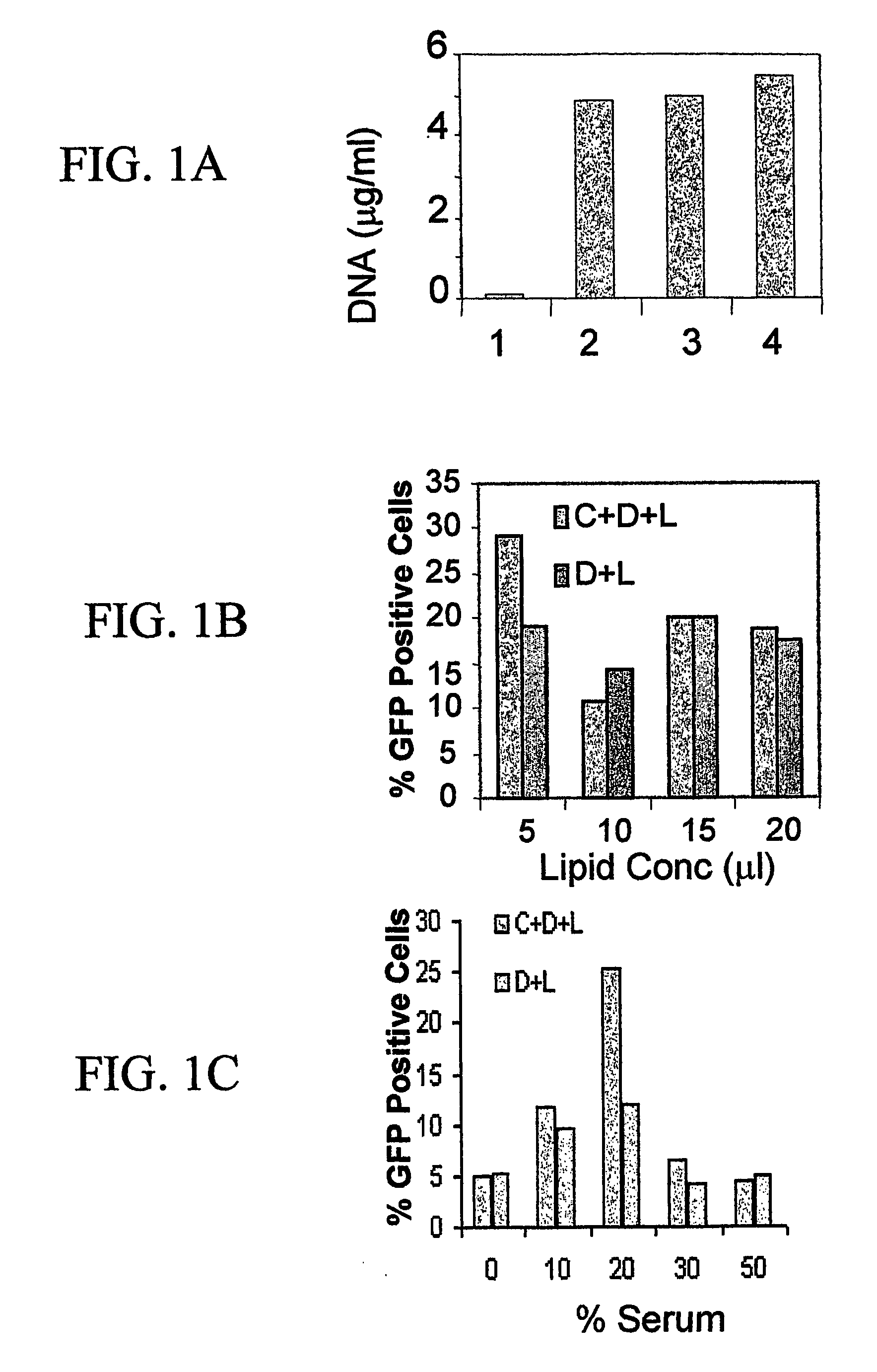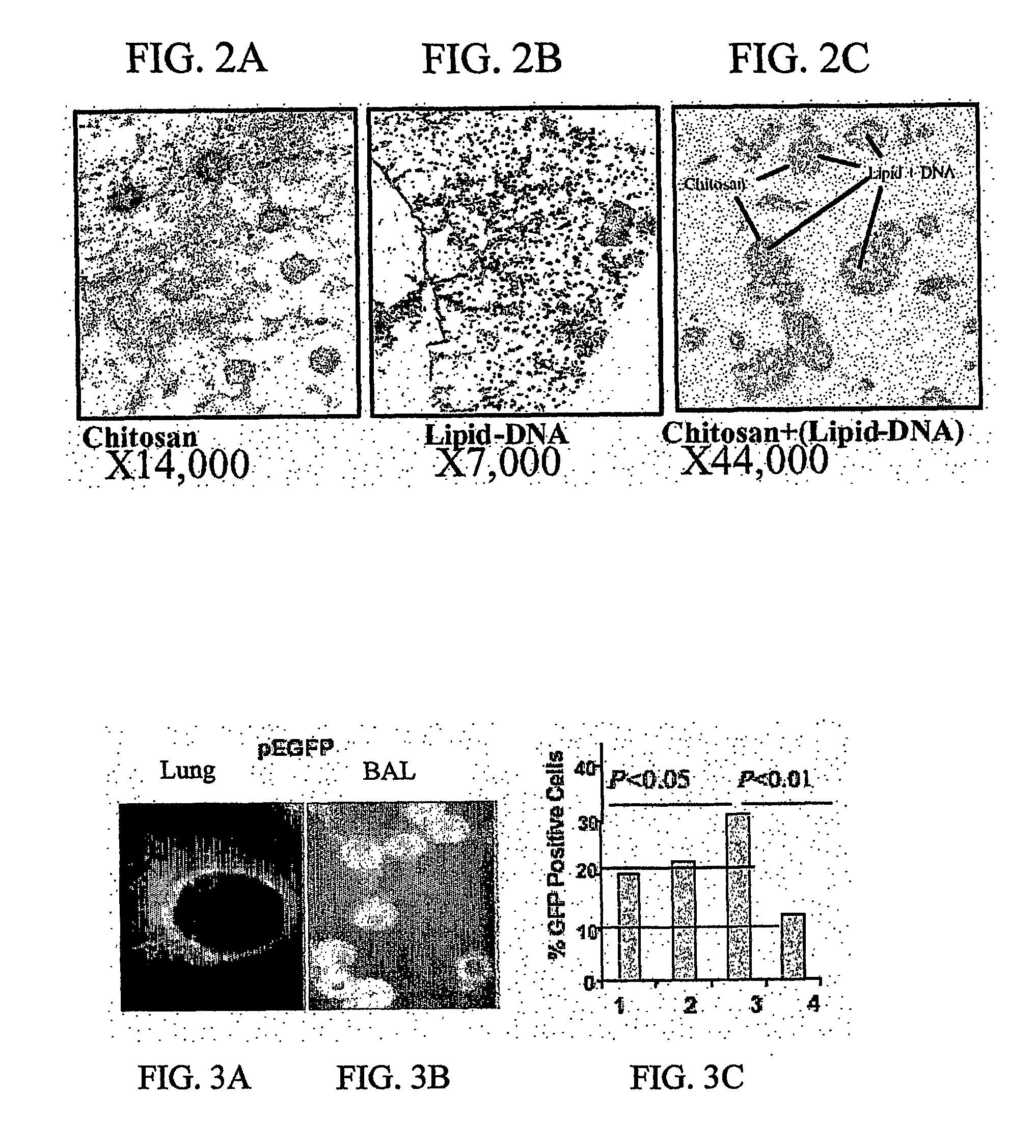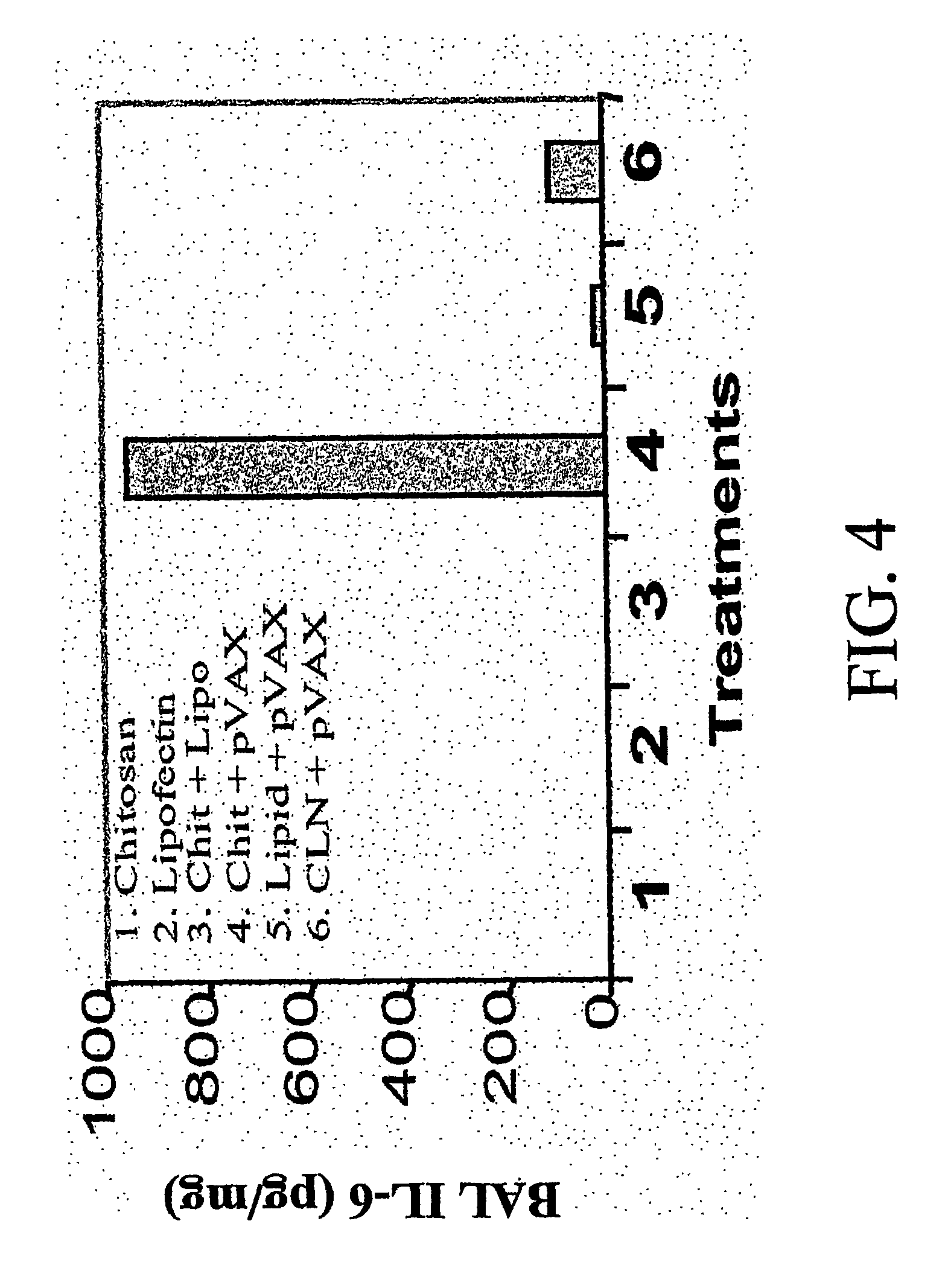Chitosan-microparticles for ifn gene delivery
a technology of microparticles and ifn gene, applied in the direction of biocide, genetic material ingredients, drug compositions, etc., can solve the problems of low transfection efficiency and toxicity, limiting the success of transfection, and inefficient gene transfer under physiologically relevant conditions, so as to improve interferon-gamma expression and regulate production.
- Summary
- Abstract
- Description
- Claims
- Application Information
AI Technical Summary
Benefits of technology
Problems solved by technology
Method used
Image
Examples
example 1
Preparation of Chlipids
[0074] A. Materials and Methods
[0075] The plasmid pEGFP was propagated in E.coli DH5α cells. Large-scale plasmid DNA was prepared using a QIAGEN kit (QIAGEN, Chatsworth, Calif.), following the manufacturer's specifications. This produced sufficiently pure DNA.
[0076] Chlipids were prepared by mixing binary complexes of LIPOFECTIN and DNA with chitosan using procedures previously described for LIPOFECTIN and DNA alone (Miyasaki S. et al., Biol. Pharm. Bull., 1994, 17(5):745-747). This procedure is highly reproducible and nanoparticle yields were similar to those of the chitosan-DNA complexes.
[0077] Chitosan (0.01% in Na-acetic acid pH 5.4) was prepared as described previously and 100 μl of chitosan solution was incubated at 55° C. for 10 minutes. Twenty-five μg of DNA was resuspended in 100 μl of sodium sulfate at 55° C. for 10 minutes and then added with 25 μl of lipofectin. The chitosan and lipofectin-DNA solution was mixed and then vortexed for 20 seconds...
example 2
Chlipids Administered Intranasally Transfect Epithelial Cells in the Mouse Lung
[0082] A. Materials and Methods
[0083] Female 8 week-old BALB / c mice from Jackson Laboratory (Bar Harbor, Me.) maintained in pathogen-free conditions. Mice were intranasally (i.n.) administered under light anesthesia with 100 μl of Chlipids+10 μg of plasmid DNA encoding enhanced green fluorescence protein (EGFP) over a period of three days. Mice were sacrificed on day four and their lungs were lavaged with 1 ml of PBS introduced through the trachea. The BAL fluid was centrifuged for 10 minutes at 300 ×g. Cells were then rinsed with PBS and re-suspended. Mice were given PBS as control.
[0084] B. Results
[0085] To identify the cells in the lung that are transfected, ovalbumin-sensitized 8 week-old BALB / c mice (n=2 for each group) were given intranasally (30 μg. / mouse) using either chlipid complexed with pEGFP or pVAX. Mice were given naked DNA as a control. The results of a representative experiment are sh...
example 3
Chlipids Induce Enhanced Gene Transfection and Expression in the Lung
[0086] A. Materials and Methods
[0087] To determine whether chlipid nanoparticles enhance the transfection efficiency in the target lung epithelial cells and monocytes, groups of BALB / c mice were administered intranasally (i.n.) under light anesthesia with 25μg of total pEGFP DNA / mouse complexed with either chitosan alone, lipofectin alone or chlipids prepared as described in Example 1. Control mice received the same amount of DNA in saline PBS. Twenty-four hours after, mice were sacrificed.
[0088] A parallel group of mice were subjected to bronchoalveolar lavage. The BAL fluid was centrifuged for 10 minutes at 300×g. Cells were then rinsed with PBS and resuspended. Flow cytometry experiments were conducted to determine the EGFP transfection levels in BAL cells. Aliquots of the cell suspension were applied to slides using a cytospin apparatus (SHANDON SOUTHERN) and the EGFP-positive cells were observed under a flu...
PUM
| Property | Measurement | Unit |
|---|---|---|
| size | aaaaa | aaaaa |
| molecular weights | aaaaa | aaaaa |
| molecular weights | aaaaa | aaaaa |
Abstract
Description
Claims
Application Information
 Login to View More
Login to View More - R&D
- Intellectual Property
- Life Sciences
- Materials
- Tech Scout
- Unparalleled Data Quality
- Higher Quality Content
- 60% Fewer Hallucinations
Browse by: Latest US Patents, China's latest patents, Technical Efficacy Thesaurus, Application Domain, Technology Topic, Popular Technical Reports.
© 2025 PatSnap. All rights reserved.Legal|Privacy policy|Modern Slavery Act Transparency Statement|Sitemap|About US| Contact US: help@patsnap.com



